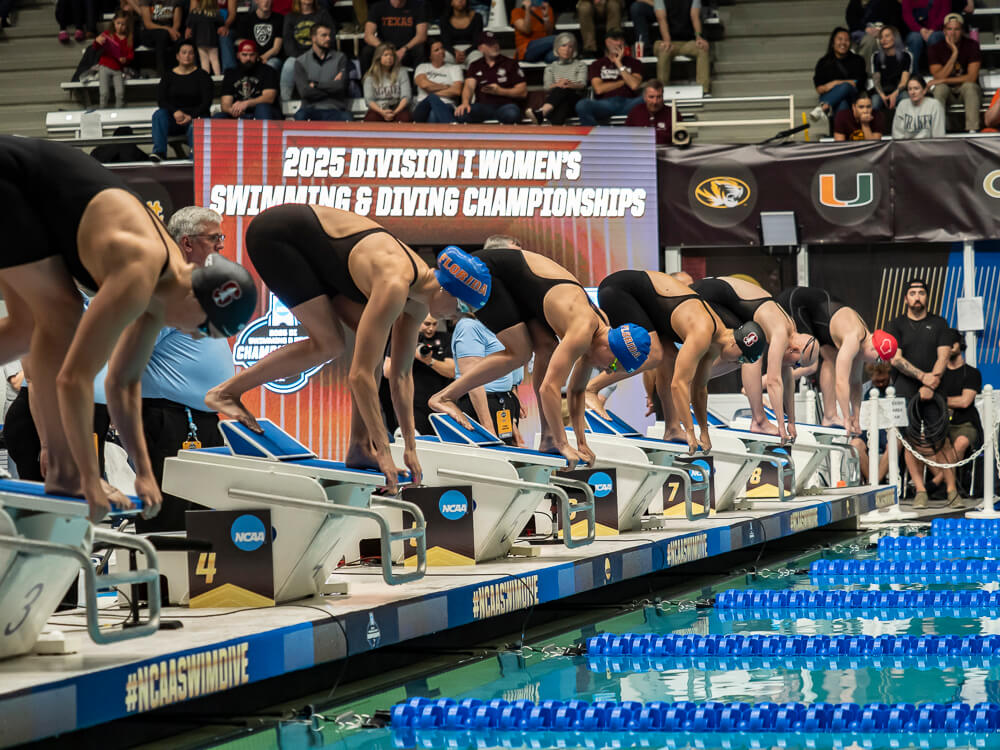Winning By a Tenth: Why Starts Matter More Than Ever

Winning By a Tenth: Why Starts Matter More Than Ever
In swimming, just tenths or even hundredths of a second often separate medalists from non-medalists. The difference between winning and losing, standing on the podium or missing it, or qualifying for a championship final often comes down to a razor-thin margin.
A blink of an eye takes about 0.3 seconds. At this year’s NCAA Men’s Championships, what separated the eighth-place finisher and the national champion in one event was 0.29 seconds. Eight of the fastest swimmers in the country touched the wall within the blink of an eye. The fields are getting faster and deeper, and fractions of a second now make the difference between clean and choppy water.
In events like the 50 freestyle, the first 15 meters can account for 30% of the race. This 30% will 100% impact the outcome of the race. With many elite swimmers spending as much time underwater as the rules allow, the start is more important than ever.
Despite how crucial it is, swimmers often overlook the dive during the regular season, saving it for taper. This oversight is a mistake. Swimmers should treat the start as a key part of their training all year long.
Andy Eaton, a women’s sprint coach, most recently at South Carolina, refers to the taper as the time to sharpen the blade, not forge it. Skills like mobility, flexibility, and hip engagement cannot be taught at the last minute. They are often developed through continuous land and water work. Increasing certain skills during taper is not only ineffective, it can also lead to muscle soreness and fatigue at the worst possible time.
By the time a swimmer approaches the block, every movement should be second nature.
Prioritizing dive work at the beginning of a season can lead to tremendous gains. Even just 10 minutes of dive work three times a week adds up fast. By midseason, that’s nearly nine extra hours of focused dive training. Throughout a college season, this approach can total up to 15 hours of work that will, undoubtedly, make an impact.
Fortunately, high-level dive videos are more accessible than ever. Whether it’s Olympic coverage on television or race footage on YouTube, swimmers can study world-class starts with just a few clicks. They can simply watch these videos and try to mirror what they see.
Peer coaching provides a second set of eyes to point out details that may otherwise be overlooked. While seeking advice is beneficial, this is also a skill that can be practiced independently. Underwater cameras or phone recordings provide instant feedback, allowing swimmers to review footage and compare their technique with the desired outcome.
Distance swimmers may assume this doesn’t apply to them, since the dive is a smaller portion of their race. However, mastering body position, reducing drag, and having an efficient body line are all crucial skills to have. This overall awareness translates to every phase of the race, no matter the distance.
Developing this skill teaches swimmers how to find points where drag is created or minimized. This carries over to turns, push-offs, and underwaters. In the 1500-meter freestyle, there are 29 turns. If something as simple as head position can reduce drag slightly for each turn, the cumulative effect can shave valuable time off a race. For example, at the Paris Olympics, the winner of the 800-meter freestyle, Daniel Wiffen, touched just .56 seconds ahead of second place, Bobby Finke, proving that details matter for swimmers of any distance.
As the sport of swimming continues to evolve, it’s more important than ever to train smarter, not just harder. Dive work isn’t the most physically demanding part of practice, but it requires focused attention to detail and consistent effort. It may be easy to overlook, but the payoff is worth it.




Great advice!